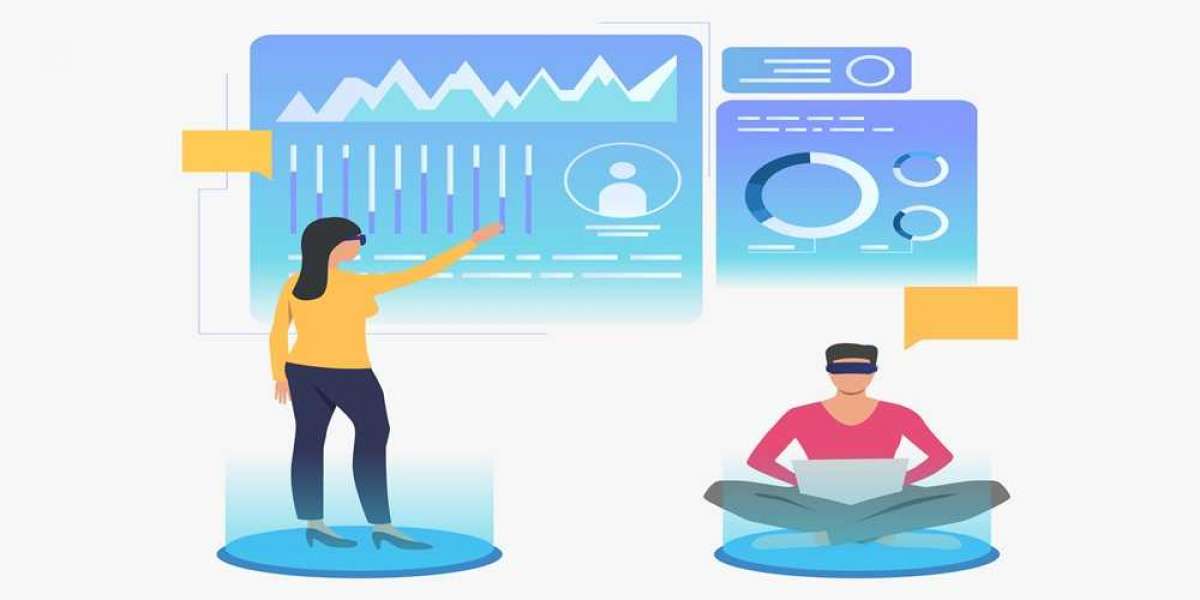In today's rapidly changing business environment, staying competitive hinges on accurately predicting market trends and meeting consumer demands. Traditional demand forecasting methods often struggle to keep pace with the complexities of modern markets. However, the emergence of Artificial Intelligence (AI) offers businesses a powerful tool to enhance forecasting accuracy. AI-driven forecasting techniques leverage advanced algorithms and data analysis capabilities to provide more reliable insights into market dynamics.
These AI-powered methods encompass various approaches, including machine learning algorithms, neural networks, and predictive analytics models. Machine learning algorithms can sift through vast amounts of historical data to identify patterns and trends, while neural networks mimic the human brain's learning process to make more accurate predictions. Predictive analytics models use statistical algorithms to forecast future demand based on past patterns and current market conditions.
Overall, AI-driven demand forecasting methods are reshaping how businesses anticipate market dynamics, enabling them to make more informed decisions and stay ahead of the competition.
Introduction to AI-Powered Demand Forecasting
AI-powered demand forecasting revolutionizes traditional forecasting approaches by harnessing the capabilities of machine learning and deep learning algorithms. Unlike conventional methods that rely solely on historical data and statistical models, AI-driven forecasting techniques incorporate a myriad of factors, including seasonality, market trends, consumer behavior, and external influences, to generate accurate predictions.
Statistical Forecasting
Statistical forecasting, although a conventional approach, remains a fundamental component of AI-powered demand forecasting. This method utilizes mathematical models such as moving averages, exponential smoothing, and AutoRegressive Integrated Moving Average (ARIMA) to analyze historical data patterns and extrapolate future trends. While statistical models offer simplicity and ease of implementation, they may struggle to adapt to rapidly changing market dynamics and intricate patterns.
Machine Learning Models
Machine learning algorithms play a pivotal role in enhancing demand forecasting accuracy by identifying complex patterns and relationships within datasets. Regression models, a subset of machine learning techniques, analyze the correlation between dependent and independent variables to predict future outcomes. Time series forecasting, another machine learning approach, focuses on forecasting future values based on historical data patterns. Additionally, neural networks, including Convolutional Neural Networks (CNN) and Recurrent Neural Networks (RNN), excel at processing sequential data and unstructured information, making them ideal for demand forecasting applications.
Deep Learning Models
Deep learning models, a subset of machine learning, employ artificial neural networks with multiple layers to process vast amounts of data and extract intricate patterns. Convolutional Neural Networks (CNNs) are adept at image recognition tasks, while Recurrent Neural Networks (RNNs) excel in analyzing sequential data such as time series. These deep learning techniques enable businesses to achieve unprecedented accuracy in demand forecasting by capturing subtle nuances and complex relationships within datasets.
Hybrid Models
Hybrid forecasting models amalgamate the strengths of statistical and machine learning approaches to deliver superior forecasting accuracy. By combining diverse techniques such as ensemble methods and feature engineering, hybrid models can effectively handle diverse datasets and adapt to evolving market conditions. This fusion of methodologies enhances forecasting robustness, making it well-suited for dynamic business environments.
Advanced AI Techniques
Beyond traditional machine learning approaches, advanced AI techniques such as Natural Language Processing (NLP) and predictive analytics empower businesses to extract valuable insights from unstructured data sources. NLP algorithms analyze textual data from sources such as customer reviews and social media to identify emerging trends and consumer preferences. Predictive analytics leverage historical and real-time data to anticipate future demand patterns, enabling proactive decision-making and strategic planning.
Real-Time Demand Forecasting
Real-time demand forecasting enables businesses to respond promptly to market fluctuations and consumer trends. By integrating AI algorithms with IoT sensors and data streams, companies can capture real-time insights into consumer behavior and adjust production and inventory levels accordingly. However, real-time forecasting presents challenges related to data integration, model accuracy, and computational efficiency.
Industry Applications
AI-powered demand forecasting finds applications across various industries, including retail, e-commerce, supply chain management, and finance. In retail, accurate demand forecasting minimizes stockouts and excess inventory, leading to improved customer satisfaction and profitability. Similarly, supply chain organizations leverage AI algorithms to optimize inventory levels, streamline logistics, and reduce costs. In the finance sector, demand forecasting facilitates risk management, investment planning, and portfolio optimization.
Benefits of AI-Powered Demand Forecasting
The adoption of AI-powered demand forecasting offers several benefits to businesses, including improved accuracy, cost reduction, and enhanced decision-making. By leveraging advanced algorithms and big data analytics, companies can minimize forecasting errors, optimize resource allocation, and identify growth opportunities in dynamic markets. Moreover, AI-driven insights enable executives to make data-driven decisions aligned with organizational objectives and customer preferences.
Challenges and Considerations
Despite its potential, AI-powered demand forecasting faces challenges related to data quality, interpretability, and scalability. Ensuring the accuracy and reliability of input data is critical for the success of forecasting models, as inaccuracies can lead to suboptimal decisions and financial losses. Moreover, interpreting complex AI algorithms and explaining forecast results to stakeholders requires transparency and communication. Additionally, scaling AI solutions to accommodate large datasets and evolving business requirements necessitates robust infrastructure and expertise.
Future Trends
Looking ahead, the future of AI-powered demand forecasting tools is characterized by automation, integration with IoT devices, and the evolution of predictive analytics. Automation technologies such as robotic process automation (RPA) and AI-driven decision-making will streamline forecasting processes and enable real-time responsiveness to market changes. Furthermore, integrating AI algorithms with IoT sensors and edge computing platforms will facilitate seamless data collection and analysis, resulting in more accurate and timely demand forecasts.
In conclusion, AI-powered demand forecasting represents a paradigm shift in how businesses anticipate market trends and consumer demands. By harnessing the capabilities of advanced algorithms and data analytics techniques, companies can gain a competitive edge in dynamic and competitive markets. However, addressing challenges related to data quality, interpretability, and ethics is essential for realizing the full potential of AI-driven forecasting solutions.
Predict your sales volume and demand trends with our Artificial Intelligence-based SaaS platform visit: https://thousense.ai/
Source: https://diigo.com/0w76wc




